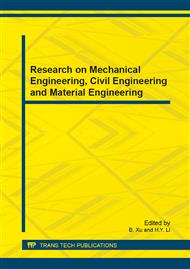p.218
p.222
p.226
p.230
p.234
p.238
p.242
p.246
p.250
Microbially Induced Carbonate Precipitation in Sulphoaluminate Cement Mortar
Abstract:
This paper investigated microbially induced carbonate precipitation in sulphoaluminate cement mortar. Urea and calcium of varied amounts were studied on the growth of microorganisms, the degradation of urea and the precipitation production. Compressive strength and flexural strength of sulphoaluminate cement mortar were measured and discussed. Results indicate that urea of 10g/L and calcium of 2mmol/L achieved favorable microorganism growth and the production of precipitation, which was composed of large amounts of calcite as well as small vaterite. Biodeposition increased the compressive strength and the flexural strength of sulphoaluminate cement mortar by 10% and 21%, respectively.
Info:
Periodical:
Pages:
234-237
Citation:
Online since:
October 2013
Authors:
Keywords:
Price:
Сopyright:
© 2014 Trans Tech Publications Ltd. All Rights Reserved
Share:
Citation:


